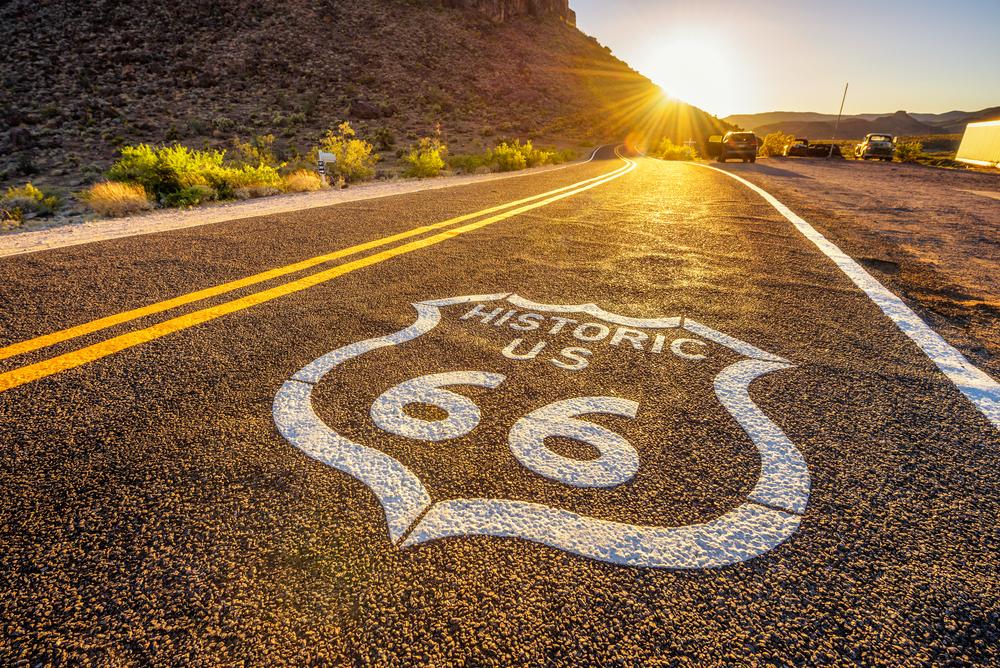It was America’s greatest place to get your kicks—once, Route 66 spirited millions of travelers across the heartland, through the desert, and out to the shining shores of California. Crossing eight states, the “Mother Road” is one of the country’s original highways, dating back to 1926, its popularity rising in tandem with the automobile, peaking in the 1940s and 1950s. And accordingly, this 2,500-mile ribbon of road has long been an essential part of America’s cultural fabric, celebrated in song, on screen, and in John Steinbeck’s unforgettable Dustbowl tale, “The Grapes of Wrath,” now part of the national canon.

Historic Route 66 is one of the country’s original highways and dates back to 1926. Nick Fox/Shutterstock





